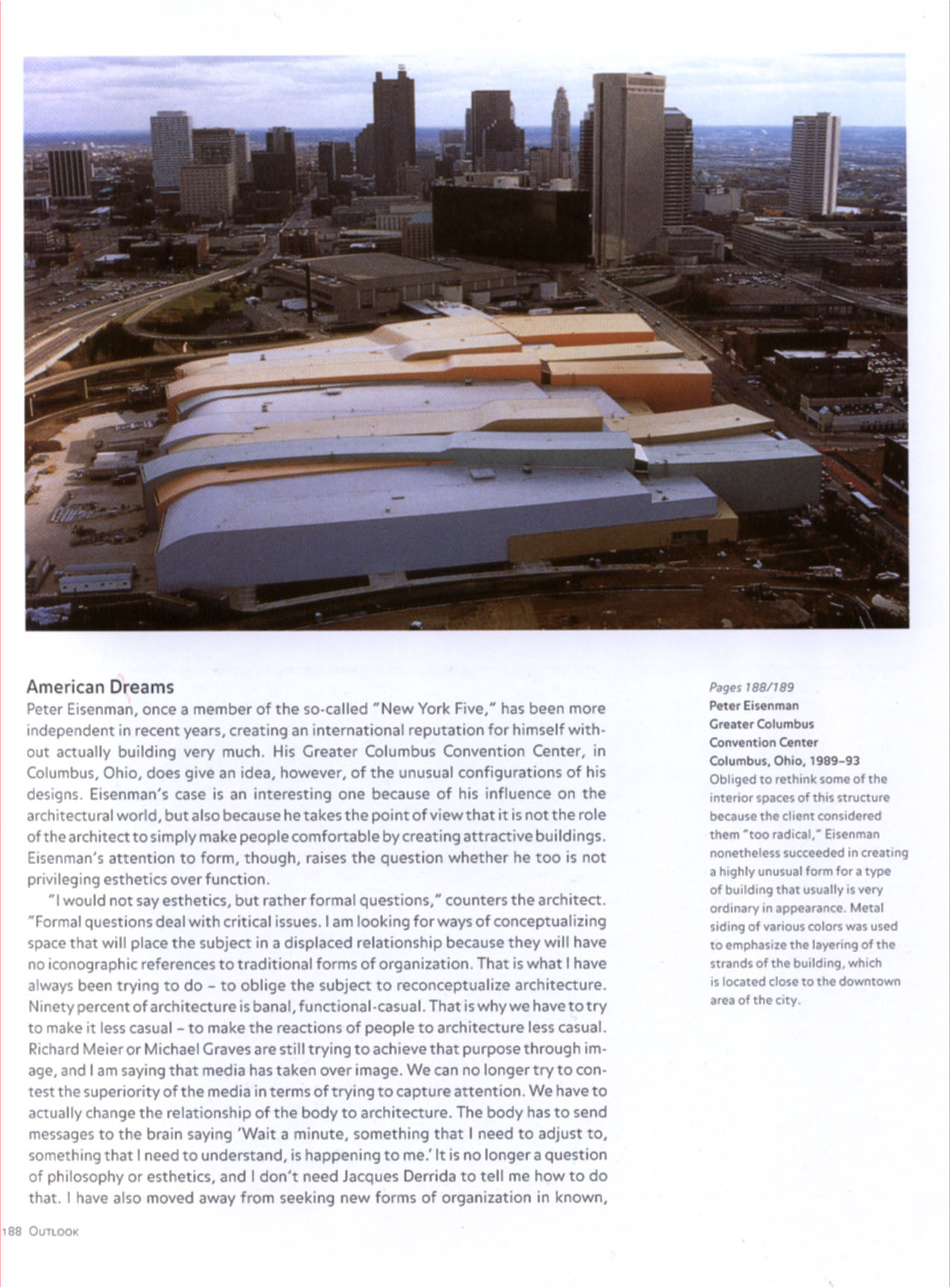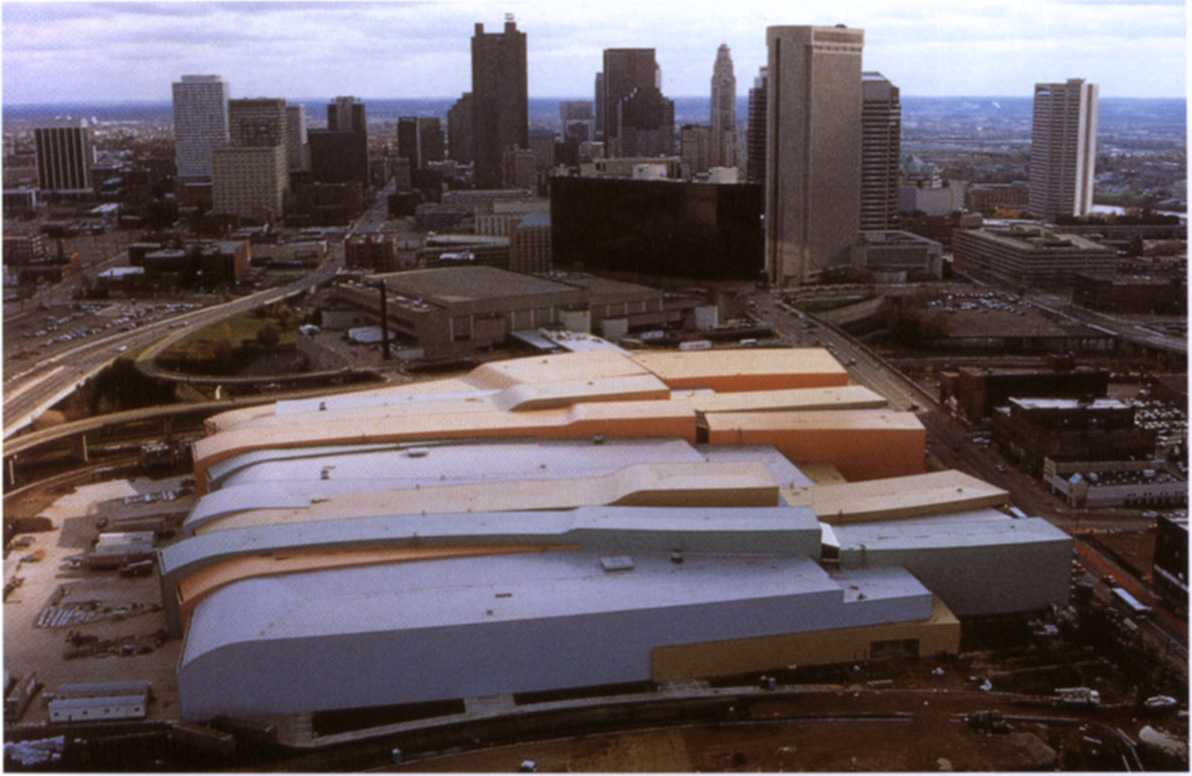New Forms Taschen 177


American Dreams
Peter Eisenman, once a member of the so-called "New York Five," has been morę independent in recent years, creating an International reputation for himself with-out actually building very much. His Creater Columbus Convention Center, in Columbus. Ohio. does give an idea, however, of the unusual configurations of his designs. Eisenman's case is an interesting one because of his influence on the architectural world, but also because he takes the point of view that it is not the role of the architect to simply make people comfortable by creating attractive buildings. Eisenman's attention to form, though, raises the question whether he too is not privileging esthetics over function.
'I would not say esthetics. but rather formal questions," counters the architect. "Formal questions deal with critical issues. I am looking for ways of conceptualizing space that will place the subject in a displaced relationship because they will have no iconographic references to traditional forms of organization. That is what I have always been trying to do - to oblige the subject to reconceptualize architecture. Ninety percent of architecture is banał, f unctional -casual. That is why we have to try to make it less casual - to make the reactions of people to architecture less casual. Richard Meier or Michael Graves are still trying to achieve that purpose through image, and I am saying that media has taken over image. We can no longer try to eon-test the superiority of the media in terms of trying to capture attention. We have to actually change the relationship of the body to architecture. The body has to send messages to the brain saying 'Wait a minutę, something that I need to adjust to, something that I need to understand, is happening to me.' It is no longer a question of philosophy or esthetics, and I don't need Jacques Derrida to tell me how to do that. I have also moved away from seeking new forms of organization in known.
188 Outlook
Paga 188/189 Peter Eisenman Creater Columbus Convention Center Columbus. Ohio, 1989-93 Obliged to rethink some of the interior spaces of this structure because the Client considered them 'too radical,' Eisenman nonetheless succeeded m creating a highly unusual form for a type of building that usually is very ordinary in appearance. Metal siding of various colors was used to emphasize the layermg of the strands of the building, which is located dose to the downtown area of the city.
Wyszukiwarka
Podobne podstrony:
New Forms Taschen 034 computer-oriented than Eisenman and some others, Erie Owen Moss has nonethe-le
47870 New Forms Taschen 214 Notes 1 Wigloy, Mark, in: Deconstruc-twist Architectur
New Forms Taschen 037 emphasized again here that aside from France, The Netherlands may be one of th
New Forms Taschen 161 Ptges 170/171 Simon Ungers and Tom Kinslow T-House Wilton. Naw York. 1988-94 B
New Forms Taschen 166 A finał, almost amusing example is that of Philippe Starck s, "La Flamme,
New Forms Taschen 037 emphasized again here that aside from France, The Netherlands may be one of th
New Forms Taschen 214 Notes 1 Wigloy, Mark, in: Deconstruc-twist Architecture. The
47870 New Forms Taschen 214 Notes 1 Wigloy, Mark, in: Deconstruc-twist Architectur
New Forms Taschen 203 nmimni Sir Richard Roger* Europcan Court of Humań Rights Strasbourg, France. 1
2, The Life Insurance Medical Research Fund, 3^5 Fast k6th Street, New York 17, N. Y., has awarded a
1948 stoeger ww2 2 AMERICA’S GREAT GUN HOUSE 433AUTOMATIC PISTOLS OF THE WORLD WAR JAPANESE NAMBU MO
więcej podobnych podstron